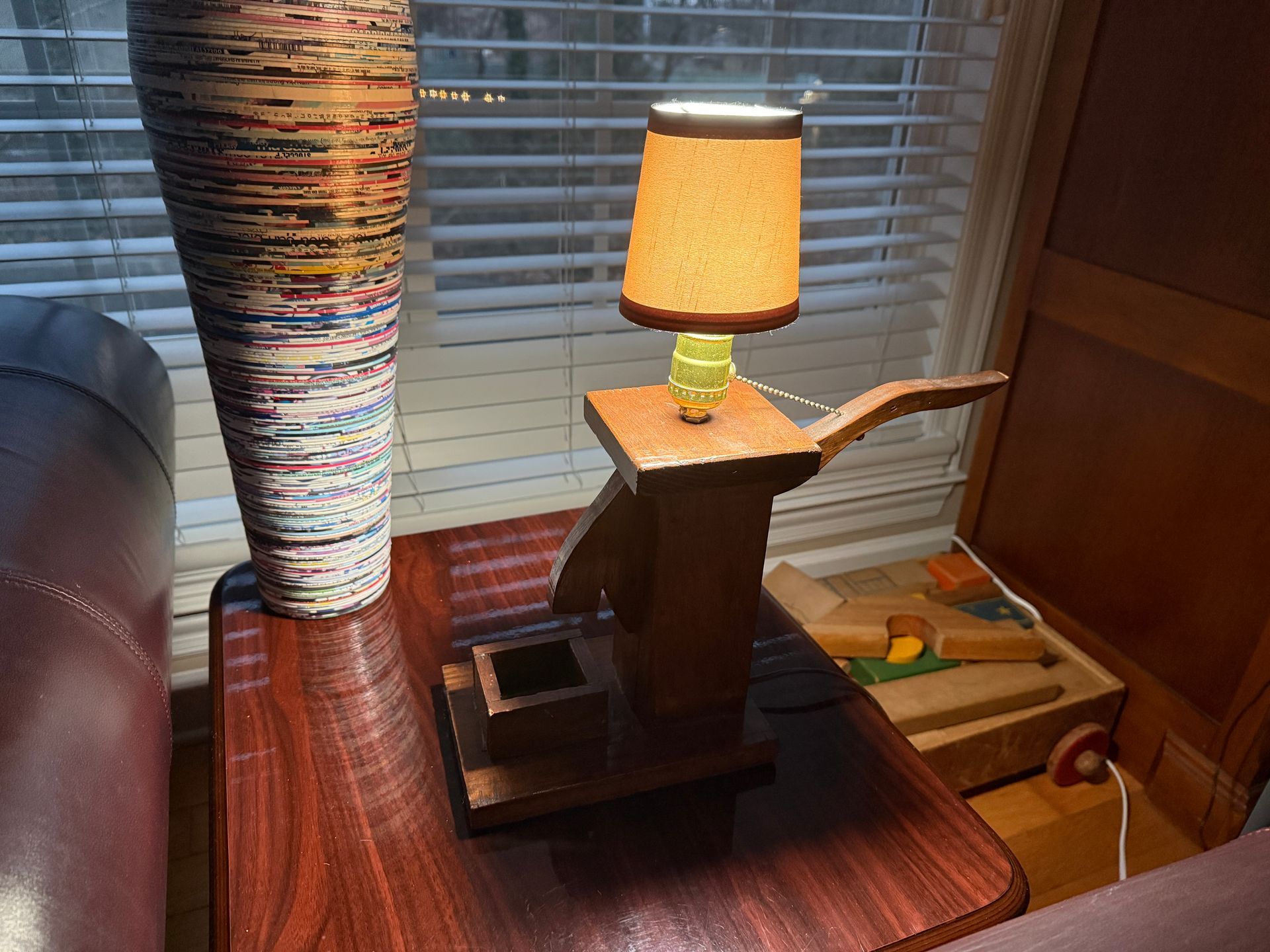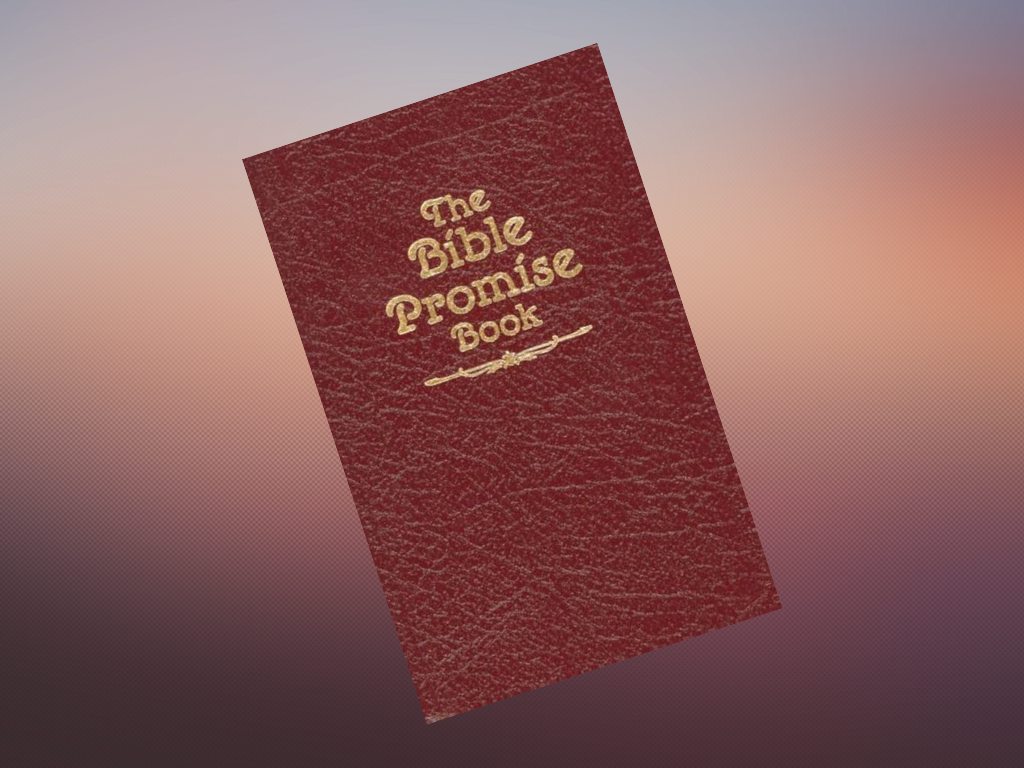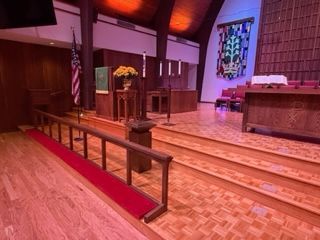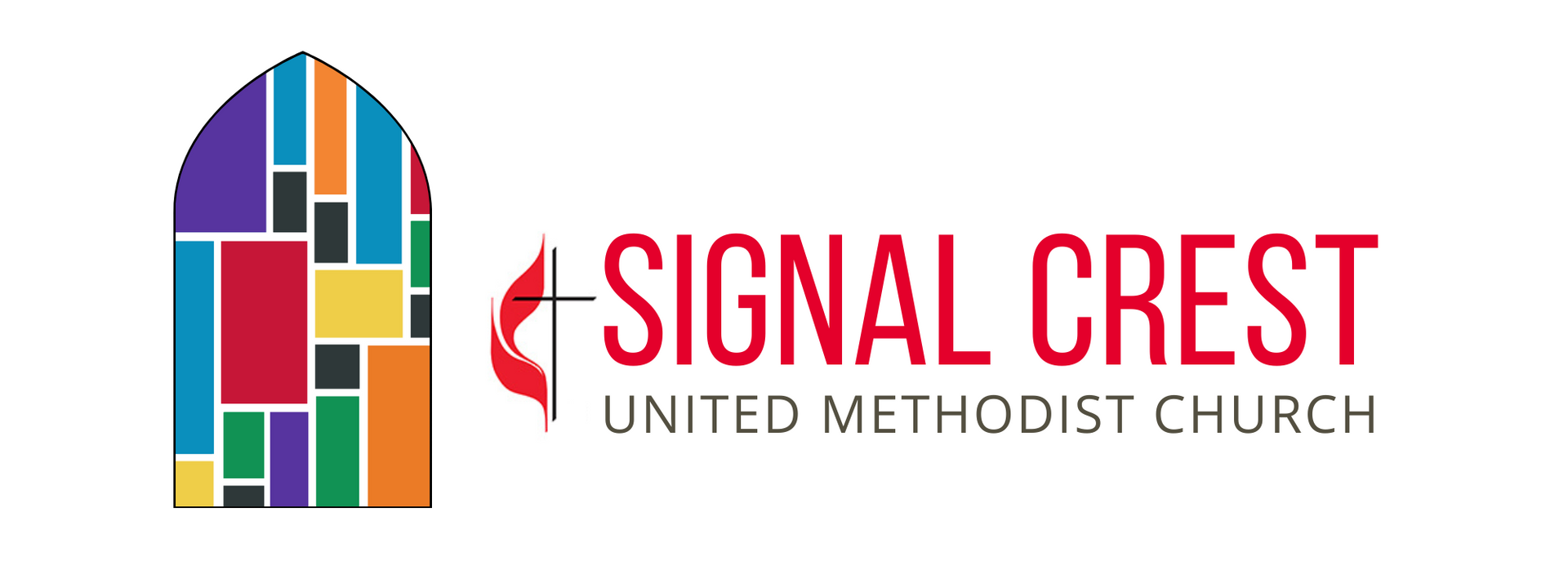
What are you doing New Year’s Eve? Perhaps this question reminds you of an old Ella Fitzgerald classic! Or perhaps you are familiar with the tradition of churches hosting a Watch Night service on New Year’s Eve. The Watch Night tradition traces back to Moravian churches in Europe in the 18th century who would host on this night a vigil to reflect on the year just past and to prepare, through repentance and resolution, for the year to come. John Wesley, the founder of the Methodist movement in England, attended a Moravian Watch Night service and later adapted it for a Covenant Renewal service that is still frequently celebrated at the turn of the new year. The Watch Night tradition took on additional significance for African Americans during the Civil War as enslaved persons gathered in homes and churches on December 31, 1862. This was the night before President Abraham Lincoln’s Emancipation Proclamation took effect. They stayed up well past midnight to watch the long dark night of slavery turn into a bright new dawn of freedom. Watch Night services continue to be a strong tradition in many African American churches today. The Watch Night tradition invites us all to reflect back on the year just past with gratitude for God’s presence with us through the ups and downs, the good and the bad, as well as to look toward the year ahead with confidence in God’s promise to continue to guide us along our way toward the freedom and fullness of life together in Christ. So as we prepare to enter the new year 2026, I’d like to invite us to join in “A Covenant Prayer in the Wesleyan Tradition” (United Methodist Hymnal, #607) as a prayer for each of us personally, for our families, and for our congregation at Signal Crest: I am no longer my own, but thine. Put me to what thou wilt, rank me with whom thou wilt. Put me to doing, put me to suffering. Let me be employed by thee or laid aside for thee, Exalted for thee or brought low for thee. Let me be full, let me be empty. Let me have all things, let me have nothing. I freely and heartily yield all things to thy pleasure and disposal. And now, O glorious and blessed God, Father, Son, and Holy Spirit, Thou art mine, and I am thine. So be it. And the covenant I have made on earth, Let it be ratified in heaven. Amen.

What’s the best Christmas gift you’ve ever received? Aside from Jesus, of course ;-) The red big wheel spinout speedster might be up there for me. Another one might be the year I got my very own jambox. But I’d have to say that the very best gift I’ve received wasn’t exactly a gift, in the way we normally think of gifts, but it did come around Christmas. When I was in the fall of 7 th grade, I took a shop class, where we learned about all kinds of tools for woodworking, electronics, and other practical applications. The final project was to build a lamp that looked like an old water pump. Everyone who had ever taken shop class had a lamp like that. My brother had one. Now it was my turn to make a lamp. The instructions for this lamp were about as old as the book of Job, and I tried to follow them to the letter. Measuring the wood, measuring it again just to be sure, cutting the wood, sanding the wood, sanding the wood some more, gluing the wood, staining the wood, etc. When I got the cord attached to the socket and the socket in its place, I found that the socket wouldn’t sit square in its seat. It wobbled, and I had no idea why. I thought I had followed the instructions to the letter. That Christmas break, everyone else was taking home a perfect little wooden lamp, except for me. I had the Charlie Brown Christmas tree of wooden lamps. I was capital-F Forlorn. I was embarrassed to show it to my parents, and especially to my brother (whose lamp was also perfect). But I remember my dad looking at it, thinking to himself for a moment, and then telling me he knew someone we could call about this. He called his friend Jack Eggleston, who was the plant manager for the local manufacturer in town. I really didn’t want the guy whose plant built fancy pool tables to see my puny little lamp. But a few days before Christmas, we loaded up the lamp and took it over to Mr. Eggleston’s house. He took the lamp in his hands, turned it around, told me I did a nice job on the sanding and staining, and then he said he had an idea on what we could do. He got out his own toolbox, dug around and found a little nut. Then he slipped that little nut into place right below the socket, and voila—no more wobble! Just like that, it was fixed, and it worked perfectly. That was nearly forty years ago now. Both my dad and Mr. Eggleston have long since died. But the lamp lives on! It stands on a side table in our den and still shines the light. And of all the Christmas gifts I’ve received over the years, I believe it was Mr. Eggleston’s small act of kindness toward this awkward kid that shines the brightest.

The pop song may proclaim “it’s the most wonderful time of the year,” but for many folks, December is a difficult month. With the days getting shorter and the nights coming on earlier, many people experience the down-turned spirits of Seasonal Affective Disorder. And for those who have lost a loved one, the holidays can be especially difficult. My dad died in December over thirty years ago, and today is the twentieth anniversary of Tracy’s dad’s death. December can be a hard month for a lot of people. Ever since this season became tenderized by the experience of grief and loss, I have found myself drawn to another song. It’s not one of the most popular or beloved of the Christmas songs, but it can be found in our hymnal (#221). The words were written by a 19 th century English poet, Christina Rosetti, who suffered poor health from a young age. Her words were set to a soft, gentle tune from the composer Gustav Holst. It’s the hymn “In the Bleak Midwinter.” In the bleak midwinter, frosty wind made moan, Earth stood hard as iron, water like a stone; Snow had fallen, snow on snow, snow on snow, In the bleak midwinter, long ago. She draws from an old tradition that it snowed on the evening of Christ’s birth, blanketing the fallen world with pure white. And even though I later learned that scholars believe Jesus may have actually been born during the summertime (when traveling to your hometown to register for a census would have made more sense), I still prefer thinking he was born “in the bleak midwinter.” The early church apparently preferred this timing, too, and so they set the celebration of Christmas to coincide with the winter solstice, the so-called “longest night,” which is the point when the land’s deepening darkness reverses, the light returns, and the days begin to lengthen again. I still draw comfort and hope in thinking that it was “in the bleak midwinter,” around the time of the longest night of the year, that Jesus, the Light of the World, was born into this world. However bleak our lives may feel, or the news of our world may seem, that’s precisely when Jesus first came, and when Jesus still comes, even today.

Real or artificial—what kind of Christmas tree will you have in your home this year? That was the question that the TODAY show explored the other day as the gigantic Christmas tree at the Rockefeller Center was being prepared to be lit. Each kind of tree has its own benefits and drawbacks. There’s no substitute for the sight and smell of a real Christmas tree. They are also more environmentally friendly since they can be recycled as mulch and wood chips, and they support local farmers and businesses. However, they can be messy in the needles they drop and fussy in the amount of water they require. Artificial trees are more convenient. They don’t drop needles or need water. Many of them come pre-lit, and they’re reusable for many years. However, some cite the environmental cost of manufacturing artificial trees from all the plastic, and because about 80% of artificial trees are made in China, tariffs are also driving up the financial cost. As a nation it seems we’re torn between the two. While 85% of Americans say “real Christmas trees bring joy to everyone who sees and smells them,” an NBC survey also found that about 83% of us will have an artificial tree in our home this year. I remember growing up, our family always bought a fresh white pine tree from our friend Mr. Burnop. We were surely among the last in the town to get ours, usually venturing over to his farm the week before Christmas. But he would always hold one back for us. Suffice it to say, I have some “sappy” memories of those trees over the years. But after my dad died and my brother and I moved on, my mom eventually shifted over to artificial. We now have in our home at the parsonage the last tree she bought, which is not only pre-lit but rotates! Regardless of where you fall on the real versus artificial debate, maybe we can all agree that what matters more is not what kind of tree it is but what is on our tree and who is around it. Whether I’m hanging them on a real white pine or a fake Frasier fir, the various ornaments we’ve collected over the years each carry memories and stories of when we got them, where we got them, who gave them to us, how old the kids were when they made them, and in some cases how old I was when I made them. And, of course, what is most real are the “real”-ationships with those who have gathered around our trees over the years—friends and family members, some of whom are no longer with us in body but are very much present in heart and mind—and especially our relationship with the One who is the real reason we put up any kind of tree in our homes in the first place.

A couple of months ago, I joined the YMCA downtown. I had been a member of the Y when we lived in Athens, but I simply dragged my feet and didn’t join here until this year. I’m glad I did, not only because I enjoy the exercise, but also because I experienced again what it is like to be a newbie. I wanted to start out visiting some of the different kinds of workout classes that are available. I went to one that meets at 6 am called “Afterburn.” I went to a spin class one evening. I went to a yoga class another night. Each time, I arrived early, because I was a complete and total newbie and had no idea what I was doing. When I arrived in the area called “The Pit” for the “Afterburn” class, there were all these folks gathering all these weights and mats, like they all knew what they were doing. I, of course, did not. Thankfully, one guy walked in whom I had met, Joan Barnes’ son Mike. I reintroduced myself to him and told him I was new and didn’t know what I was doing. He was glad to see me there and invited me just to follow along with him and do what he did. Likewise, when I arrived for the spin class, I was readily identified as the newbie in the room. But there were some very friendly folks there who welcomed me and helped me get acclimated to the bike and made sure I understood the instructor during the class. When it was over, they all invited me to come back. While I had been to spin and workout classes before at the previous Y, I’d never been to a yoga class. So again, I got there early. While some of us were waiting for the room to become available, I told this complete stranger who had a kind face that I was a newbie and had never been to a yoga class before. She was so helpful. She told me I would need to get a mat and some blocks from the cubbies, and she suggested I set up my station in the back and just do what everyone else did. It was so relaxing. It was just what I needed! I’m grateful for this experience of being a newbie at the Y, because sometimes I forget what it can be like for folks who visit the church for their first time. They often arrive early. They don’t always know what to do, where things are, how things go. Maybe there aren’t any familiar faces they can approach to ask. There are often a lot of newcomers and guests during the Advent and Christmas season. I’ll try to keep an eye out for them here at church, like I am doing now at the Y, and extend a warm welcome to them, and I hope you will as well. It can be as simple as saying, “I’m so glad you’re here! I don’t believe we’ve met; my name is ___.” It can make a big difference! This Advent—and always—let us all resolve to “welcome one another, therefore, just as Christ has welcomed you, for the glory of God” (Romans 15:7).

This coming Sunday, November 16, we will celebrate our annual Consecration Sunday with one combined worship service in the sanctuary at 10 AM, followed by a congregational brunch in the Crest Center sponsored by the Stewardship Team and catered by our chef Steve Ellis. This year’s theme is “Standing on the Promises.” We will celebrate God’s generosity and faithfulness toward us in the manifold promises of Christ, and we will consecrate our promises of generosity and faithfulness to God in Christ through our prayers, our presence, our gifts, our service, and our witness through the church. Toward the end of our worship together, you’ll be invited to bring your commitment card to the front of the sanctuary (there will be extra cards available). You’re also welcome to share your commitment for 2026 through our online form at https://www.signalcrestumc.org/give-back. Reflecting on this year’s theme reminds me of a gift I received for my high school graduation of a book of God’s promises that we find in the Bible. Maybe you have a book like this, too; it’s been a perennial bestseller for the past forty years. It lists over 1,000 promises, arranged in alphabetical order. Who knew the Bible contained so many promises of God! I’m also reminded of something that the Apostle Paul shared with the church in Corinth: “For the Son of God, Jesus Christ, whom we proclaimed among you, Silvanus and Timothy and I, was not ‘Yes and No’; but in him it is always ‘Yes.’ For in him every one of God’s promises is a ‘Yes.’ For this reason it is through him that we say the ‘Amen,’ to the glory of God” (2 Corinthians 1:19-20). Here are a few of my favorite promises of Jesus. Rest: “Come to me, all you that are weary and are carrying heavy burdens, and I will give you rest.” – Matthew 11:28 Peace: “Peace I leave with you; my peace I give to you. I do not give to you as the world gives. Do not let your hearts be troubled, and do not let them be afraid.” – John 14:27 Presence: “Remember, I am with you always, to the end of the age.” – Matthew 28:20 Return: “See, I am coming soon; my reward is with me, to repay according to everyone’s work.” – Revelation 22:12 Eternal Life: “Very truly, I tell you, anyone who hears my word and believes him who sent me has eternal life, and does not come under judgement, but has passed from death to life.” – John 5:24 These are just a few of God’s many promises to us in Christ. Do you have a favorite? Thanks be to God for all the promises upon which we can stand together in Christ here at Signal Crest!

This past Sunday we observed All Saints Sunday. We remembered the lives of nine church members who passed away in the past year, as well as two former staff members. It also happened to be the occasion for our first celebration of Holy Communion on a Sunday in the sanctuary with our new church flooring. One of the signs it was time for new flooring in the sanctuary was all the stains on the red carpet from the grape juice dripping from the chalices during the serving of Communion. Those stains that freckled the front reminded us how many times our church family communed with Christ and with one another in that sacred space. However, the stains are hard to clean, so the decision was made to go with hard wood flooring in the front, which would be much easier to clean. After worship on Sunday, I checked the new hard wood to see if there might be some juice stains. Would you know, there were! And even though those stains can now be cleaned up with the simple wipe of a wet cloth, my mind got to thinking about the relationship between the communion of the saints and the communion of the stains. All of us, like that old red carpet, eventually come to bear the stains that come with life. Some of the stains in our lives we may have caused ourselves; some of the stains may have been caused by others. But however we got them, there they are, and they can be difficult, if not impossible, to remove from the fabric of our lives. And so we are, all of us, together members of the communion of stains. And yet, when we put our trust in Christ’s saving grace and become a follower of Jesus, we come to be counted among the communion of saints, those set apart or “sanctified” as holy and precious to God through Christ. And whenever we share together in the sacrament of Holy Communion, we remember the sacrifice Jesus made for us on the cross that forgives us of our sin and washes those stains clean. In the words of one of our worship songs, we remember Jesus paid it all All to him I owe Sin had left a crimson stain He washed it white as snow Thanks be to God for the indescribable, incalculable grace that, through Christ, transfers our membership from the communion of the stains to the communion of the saints.

With Halloween coming up on Friday, what has been your favorite Halloween costume? I’ve had a few over the years. I remember as a kid dressing up as a Pittsburgh Steelers football player (this was back in the era of Mean Joe Greene and Terry Bradshaw). Not long after college, I donned my Concert Choir tuxedo with a sign around my neck that said “I’m sorry” and I went as a “formal apology.” I’ve also taped Smarties candies to my jeans and gone as “Smarty Pants.” But I digress. This past Sunday afternoon, we enjoyed a delightful Fall Festival, which we moved indoors into the Crest Center because of the wet weather. There were so many creative trunks/tables, including a Sugar Plum Candyland, a Jurassic Park, and the Peanuts’ Great Pumpkin patch. We had at least twelve pots of chili, ranging from traditional to white chicken to vegetarian to a pumpkin-favored one! We had all sorts of games and prizes. The Crest band rocked out to “The Monster Mash” and “Ghostbusters.” And the costumes! Tracy dressed up as a frog. David Robertson was Rowlf from the Muppets. There were Buzz Lightyears of assorted sizes. Tinkerbells. Batmen (including one dad dressed up as Alfred the Butler). And a cadre of KPop Demon Hunters from the huge Netflix movie! The tradition of dressing up for Halloween goes back to ancient Celtic superstitions about warding off evil spirits at the turn of the seasons. Around the 11th century, the church sought to Christianize these pagan practices in its tradition of All Hallows’ Eve, which is the day before All Hallows Day, or what we call All Saints Day, November 1. All Saints Day is essentially the church’s version of Memorial Day, when we commemorate the lives of those who died in faith in the past year and joined the Church Triumphant. This coming Sunday, November 2, in both of our worship services, we will lift up the names of those church members and former staff members who have joined the “communion of saints.” The Apostle Paul offered some suggestions about how we might dress up, not just for one day, but for all time. “As God’s chosen ones, holy and beloved,” he wrote to the church in Colossae, “clothe yourselves with compassion, kindness, humility, meekness, and patience. Bear with one another and, if anyone has a complaint against another, forgive each other; just as the Lord has forgiven you, so you also must forgive. Above all, clothe yourselves with love, which binds everything together in perfect harmony” (Col 3:12-14). Long ago Paul caught on that cosplay can actually help form Christian character. So if you’re not sure what you want to dress up as for Halloween this year—or even if you have a costume in mind—we can always, all of us, dress up as a Christian.

This past weekend was my 30th college reunion at Emory & Henry in Virginia. It was a beautiful weekend, and I enjoyed seeing and catching up with some of my classmates, many of whom I hadn’t connected with in several years. I also enjoyed visiting some of my familiar haunts, including the chapel that’s at the heart of campus. In the back of the chapel, above the balcony, there is this stained-glass window that I have always found myself drawn to. I love the image of Jesus with one arm around the shoulders of an apparently uncertain young man, pulling him into a side-hug, and the other arm confidently pointing in a direction in which the young man should possibly go, providing clarity in the midst of a very busy, even chaotic backdrop. Perhaps this window resonates so much with me because I was an uncertain young man when I was in college. I wasn’t sure the direction in which I should go. I had sensed a calling into ministry, but I also felt like I needed to keep my options open. My dad died of cancer my senior year, which only deepened the sense of uncertainty and chaos. How I wished that Jesus would have simply shown up, put his arms around my shoulder, and pointed out to me the way he wanted me to go. Or maybe he had been doing that and this window was the sign I had been praying for, even though I couldn’t see it as such at the time. Looking back now from the perspective of 30 years, I believe I can see that Jesus has been by my side all along, with one arm to be my comfort and the other to be my compass. I can also see that there have been several others along the way—mentors, colleagues, friends—who have been the arms of Jesus for me, who have put their arm around me and have pointed out a way forward for me in the name of Jesus. How about you? How have you experienced the comforting presence of Jesus with you, and the confident guidance of Jesus, especially in times of uncertainty or chaos? Who in your life has been the arms of Jesus for you, providing comfort and pointing a way forward for you? And for whom might you provide comfort and a compass today in the name of Christ?


